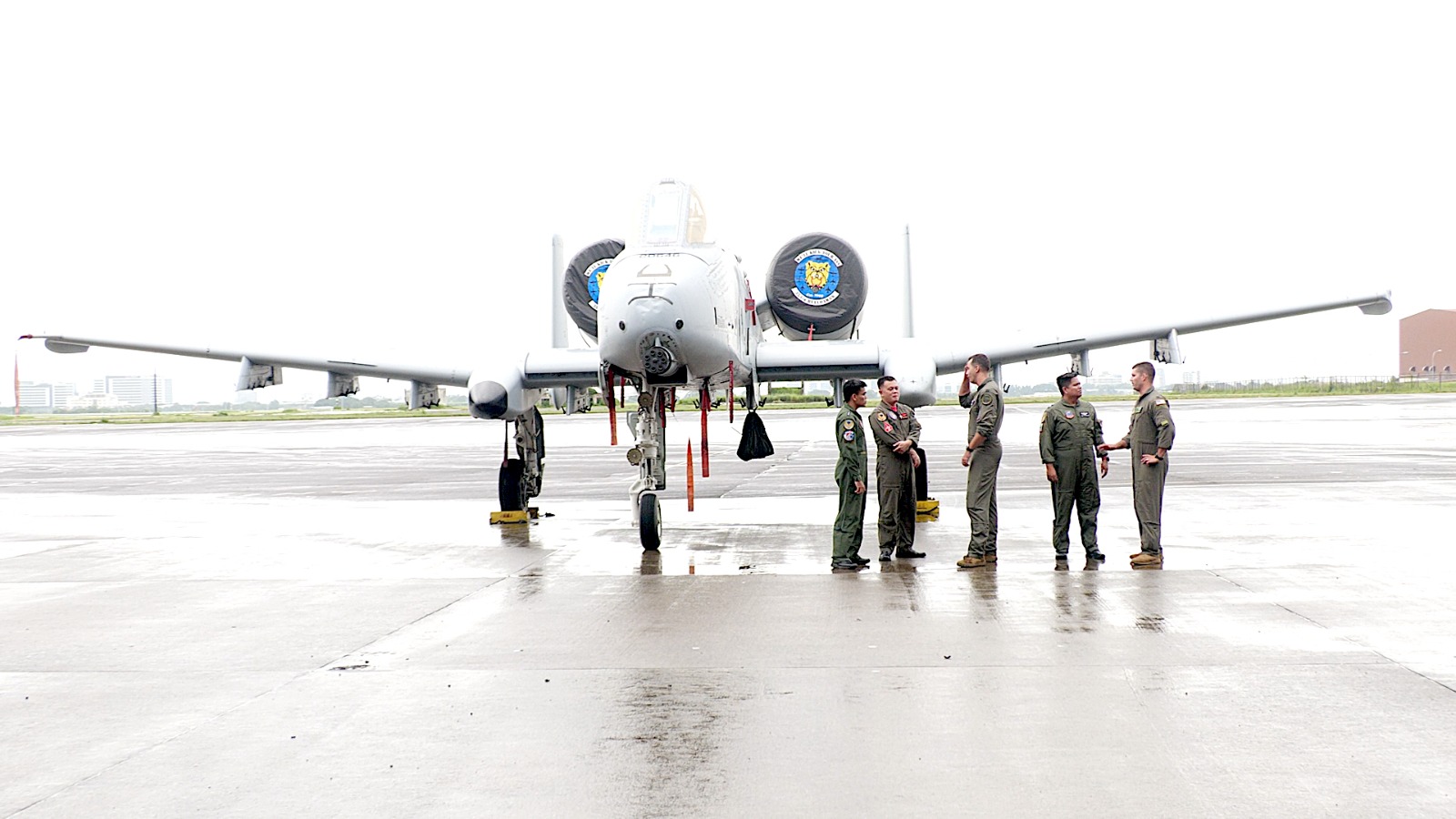
Pilots from the United States and Philippine Air Force teams share some views in front of the US A10 (Warthog) aircraft. INQUIRER.net / Ryan Leagogo
PAMPANGA, Philippines — The second leg of the joint military drills of the Philippine Air Force (PAF) and its counterparts in the United States expanded to parts of Visayas and Mindanao and even in sections of Luzon facing the West Philippine Sea (WPS).
The second iteration of PAF and United States’ Pacific Air Forces’ (Pacaf) joint exercise dubbed as “Cope Thunder” focused on deployment of more troops and aircraft in Mactan Island in Visayas, General Santos City in Mindanao and Zambales in Luzon.
Several PAF aircraft including one C130 Hercules, one Huey helicopter, two A29B Super Tucanos, two T129 ATAK helicopters, and three FA-50 light fighter jets joined the exercise, with Pacaf also bringing several assets such as three C130 Hercules, six A10 Warthogs, and six F22 Raptors.
US Warthog being attended to by United States Air Force personnel during a military drill with Philippine counterpart in Pampanga. INQUIRER.net / Ryan Leagogo
A total of 1,272 personnel — 687 from PAF and 585 from Pacaf — participated in the combat exercise.
Mactan and General Santos City saw combat and maritime interdiction tactics conducted by PAF troops and the Pacaf, while troops from both countries conducted air interdiction and maritime target and air combat maneuvers off the waters of Zambales.
For PAF pilot Captain Philip Vincent Roy Freire, the drills could improve the interoperability of both sides in addressing “incursions” and other issues such as terrorism, search and rescue operations and humanitarian assistance and disaster relief (HADR).
“We practiced operating in simulated hostile environments with simulated air-to-air and surface threats,” Freire told reporters in an interview here at Clark Air Base on Monday.
“We can apply the training in Cope Thunder to real life, specifically in terms of interoperability when there comes a time we need to operate with the US, be it defending or addressing issues such as incursions, terrorism, and even search and rescue operations and HADR,” he added.
The pilot also stressed: “We are on a good path; we are presently building our capabilities.”
For Pacaf pilot Captain Liam Baldwin, the Cope Thunder is a “good opportunity for us to integrate with the PAF.”
“It did enhance our interoperability and joint procedures with the PAF,” Baldwin also told reporters.
The second iteration of Cope Thunder started from July 2 until July 21.
Cope Thunder’s first iteration was joined by 225 US troops and 330 PAF personnel with their operations only contained within Clark Air Base and Basa Air Base in Pampanga.
Cope Thunder started in the Philippines in 1976 and went on until 1990.
The exercises were discontinued after the US military left Clark Field and Subic Bay in 1991 due to damage from the Mt. Pinatubo’s eruption in June that year and also after the Philippine Senate voted against extending the lease on US military facilities in the country.
RELATED STORIES:
PAF: Revival of PH-US air force drills not directed at any country
Over 500 PH-US air force troops resume war games after three decades
Bigger PH-US air combat exercises later this year — PAF